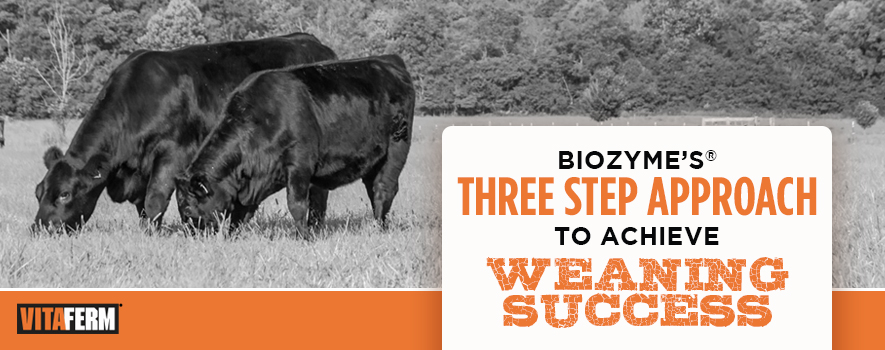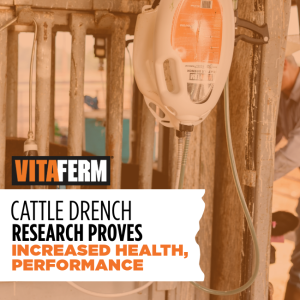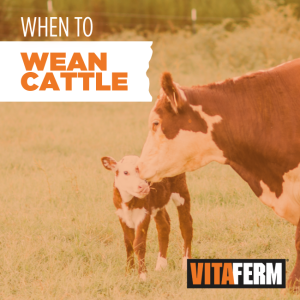
If you are a cattle producer who has raised kids, there are a lot of similarities, especially when it comes to challenges. Think about weaning time and compare it to the first few days of sending your littles to pre-school. Who sheds more tears?
At weaning, it could be a toss-up as bawling calves missing their mamas during those first few days can be heard. Likewise, cows are stressed, wondering where their calves have gone. When it comes to weaning those calves, you want to provide as much comfort and as little stress as possible.
Weaning is a critical time in young calves’ lives. Until weaning, your calves have a readily available food source by their side, that also acted as a protector and a face washer. Young calves often mimicked their mamas and started eating grass, drinking water and eating the mineral supplement that was out for them. Then one day, the producer gathers pairs and sorts the cows from the calves. At 5 to 7-months of age, the calves are weaned and have to learn survival on their own.
The Stressors
At weaning, calves are faced with several immediate changes: environment, herd groups and nutritional intake. While weaning can be stressful for the calves, the same period can also be stressful for the producer. Producers strive to keep the calves healthy, eating and growing during this transition while setting them up for future performance.
Overcoming Stress
John Ridder, Falling Timber Farm, Marthasville, Missouri, is a registered Polled Hereford breeder. His family has been in the cattle business for more than a century. He said keeping his calves eating and healthy are his two biggest priorities. More than 10 years ago, his family changed its weaning protocol, and he noticed a difference since switching their routine. He said the biggest factors are stress reduction, consistency and nutrition.
- Reducing Stress With calves already feeling the stress of weaning, Ridder sets up a vaccination schedule, so his calves aren’t compounded by stress with vaccinations on the actual weaning day. He typically administers a round of vaccinations when the calves are about 4-months old. Then, he gives another round of shots 2-3 weeks post-weaning, once the calves are accustomed to being separated from the cows.
“I want healthy cattle before I put added stress into them. I don’t like to double up on stress too much, so we don’t give vaccinations at weaning. We do it prior and after they are weaned. We’ve had great luck with keeping them healthy. We have a lot less sickness doing it this way than we previously did,” Ridder said.
Any cattle that Ridder sends to the feed yard will receive an additional two rounds of vaccinations. He feels that transition requires cattle to be in peak health.
- Keeping Life Consistent When Ridder and his family wean their calves, they only bring the calves out of the pasture and leave the cows out. Even more exclusive to the operation is that calves are left in the same groups for 2-3 weeks in the dry-lot area where they are weaned. Then, they are sorted and commingled with other calves from the farm.
“I know that is very unique but that is what we do, and it works pretty well,” he said.
To further avoid disruption, creep feeders that are put out with the calves about 45-days pre-weaning, are moved into each lot. The calves continue to receive consistent nutrition from a feeder they are used to eating from while they transition to a bunk.
“They wean on the same ration as they have been eating on and don’t transition to a silage ration for a couple weeks. That reduces their stress, too. Any way you can reduce stress, and keep them healthy seems logical to us,” Ridder explained.
- Vitamins, Minerals and Amaferm® Ridder provides his calves with Vita Charge® Stress Tubs for the first two weeks post-weaning. This jump-starts on their feed and water intake while helping them recover from stress. The Stress Tubs contain AO-Biotics® Amaferm®, a research-proven prebiotic that enhances digestibility. The Stress Tubs also contain mannan-oligosaccharides (MOS), to helps normalize gut microflora and support the immune system. Finally, the tubs include organic Zinc, the antioxidant Vitamin E and B vitamins.
“When we use Stress Tubs, the calves lick on those and keep on going. We also put the Stress Tubs out anytime we break with sickness, and it will help clear up problems,” Ridder said.
In addition to the Stress Tubs, Falling Timber Farm also feeds the VitaFerm® Gain Smart® Stocker mineral. Gain Smart ensures the weaned calves receive a complete vitamin and mineral package while still getting Amaferm.
The Ridders wean a majority of their herd in the fall, as two-thirds of the cows are spring-calvers. Regardless of weaning season, they follow the same protocol to ensure their calves stay healthy, keep eating and experience as minimal stress.
“This is the only way we wean now. It’s a routine,” Ridder said.
Raising kids and calves is a lot of trial and error; neither come with an instruction manual. For a progressive producer like Falling Timber Farm who has been in the business for more than a century, trying, these three steps, keeps their calves healthy and performing.
Looking for Your Winning Mineral Program?
Are you looking for the Vita Charge and Gain Smart Products that the Ridders use for successful weaning? Find your closest dealer here. Does your local store not carry one of the BioZyme products you ae looking for? Visit this site to get them to refer the products you are looking for. Or you can shop BioZyme products online.
Use the three steps to make weaning more successful you, your cows and your calves. Use products from the BioZyme family of brands!


